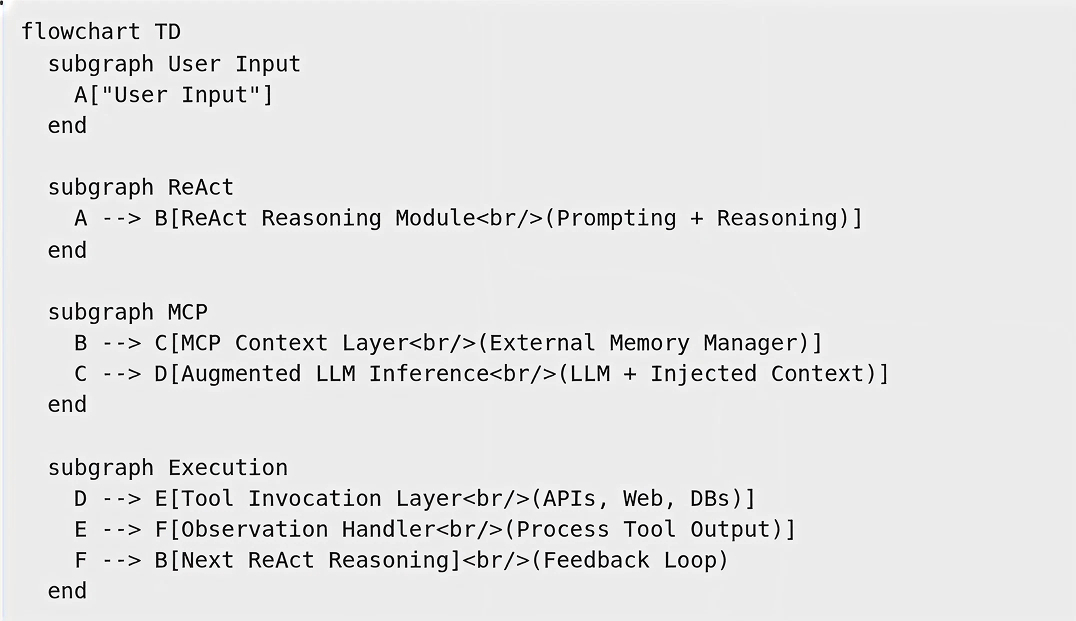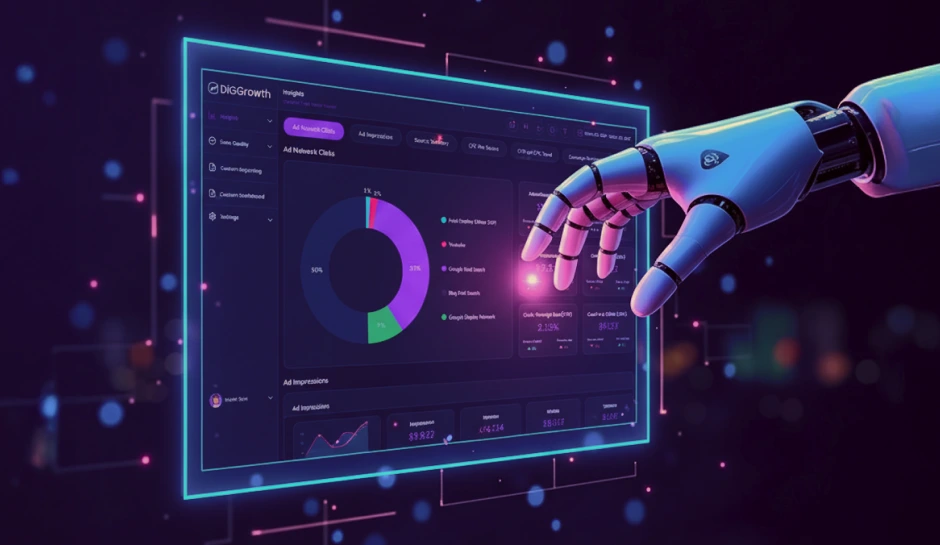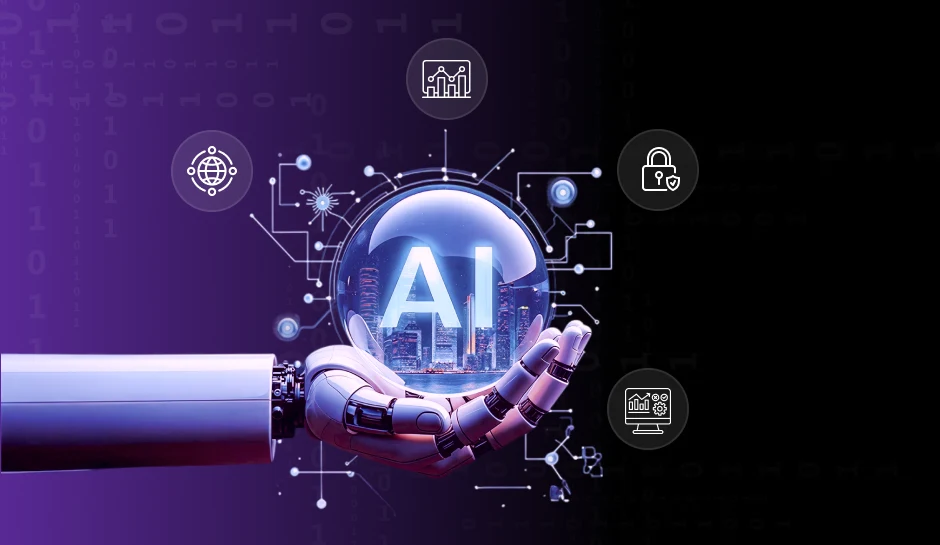
From Demos to Deployment: Why MCP Is the Foundation of Agentic AI
A quiet revolution is unfolding in AI.
And it’s not happening inside research labs.
For decades, AI was the domain of machine learning scientists and data engineers. They built and trained complex models, often working behind the curtain of academia or highly specialized enterprise teams. But generative AI changed the game.
A quiet revolution is unfolding in AI.
And it’s not happening inside research labs.
For decades, AI was the domain of machine learning scientists and data engineers. They built and trained complex models, often working behind the curtain of academia or highly specialized enterprise teams. But generative AI changed the game.
The barrier to building with AI is no longer mathematical expertise, it’s creative orchestration. And a new class of builders is rising: product managers, full-stack developers, analysts, and growth hackers. They aren’t training models. They’re wiring them into the fabric of real-world systems.
They are building agents.
The Shift from Models to Agents
In the past, the spotlight was on the model itself, accuracy benchmarks, parameter counts, and training data size. Today, the conversation has shifted:
- Old AI: Train better models
- New AI: Get models to do useful things
AI agents are not about text generation anymore, they’re about action. They call APIs, update CRMs, enrich leads, launch marketing campaigns, and automate GTM workflows. They integrate intelligence into operations.
And yet, building agents that demo well is easy. Building agents that run reliably in production is still incredibly hard.
That’s the friction point where most AI adoption stalls and exactly where Model Context Protocol (MCP), combined with reasoning frameworks like ReAct (Reasoning and Action) become essential, together forming the unbeatable middle layer of the modern AI stack.
What is MCP? And Why Does It Matter?
MCP provides a standardized interface that connects LLMs with tools, APIs, and business systems in a way that is structured, auditable, and safe. It allows developers to expose real-world functionality to AI agents through consistent schemas and controlled orchestration.
Imagine what XDM (Experience Data Model) did for Adobe; unifying customer data across products to enable seamless personalization. MCP does something similar for AI: it unifies actionability across enterprise tools.
With MCP, agents stop being clever chatbots and become operational teammates.
Meet ReAct + MCP: The Dynamic Duo
ReAct (Reasoning + Acting)
- A prompting framework that interleaves chain-of-thought reasoning with concrete actions.
- Enables agents to “think” out loud and then “do” the next best step.
ReAct + MCP are BFFs:
ReAct figures out what to do; MCP makes sure it happens safely, reliably, and with full traceability.
The 5 Foundational Patterns of Agentic AI
Agents aren’t one-size-fits-all. To build robust and effective AI agents, you need to understand the core design patterns:
- Augmented LLMs
- Prompt Chaining
- Routing
- Parallelization
- Orchestrator-Worker Architecture
The foundation: LLM + access to tools, APIs, and real-time data.
Example: Pull LinkedIn firmographics → Enrich CRM → Draft hyper-personalized outreach.
Break complex tasks into atomic steps. Each step gets validated.
Example: Draft an email → (ReAct : “Is tone appropriate?”) → Check tone → Translate → Schedule.
Classify tasks and dynamically assign the right agent.
Example: Route VIP leads to sales, others to nurture flows.
Run subtasks simultaneously to boost performance and reliability.
Example: Generate multiple copy variants → Run checks on tone, compliance, personalization in parallel.
LLM acts as the planner; workers execute subtasks.
Example: Plan a multi-touch nurture campaign based on deal size and persona.
These patterns are made real and reliable through MCP. Without it, agents flounder in messy, unpredictable environments. With MCP, developers build with confidence and structure.
The Hardest Part of AI Agents: Evaluation and Trust
The core problem isn’t building agents. It’s trusting them with business-critical systems.
When agents touch your CRM, MAP, ad platforms, or customer experience, errors aren’t just inconvenient. They are expensive.
Evaluation is the new QA for AI. Build it early, and build it right. Here are the four pillars of agent evaluation:
- Task Completion
- Tool Call Accuracy
- Reasoning Transparency
- Process Metrics
Did the agent actually deliver business value?
Was the lead scored correctly? Was the right campaign launched?
Did the agent choose the right API or system call?
Did it enrich the right field, use the right segment, apply the right tag?
Can you trace the agent’s decision-making logic?
Was fallback triggered? Was human review involved?
Success/failure rates, retry attempts, token consumption, root cause tracing.
This is where MCP becomes essential. By wrapping tool access in structured schemas and logging every interaction, MCP gives developers and stakeholders the observability they need to trust AI in production.
Scaling AI Agents: From One Prototype to Enterprise-Wide Orchestration
Building one agent is exciting. Scaling 10+ agents across your GTM stack? That’s where real business value and complexity emerges.
Here’s what breaks as you scale:
- Too Many Tools, Poorer Decisions
- Security is Not Just Authentication, It’s Authorization
- Opaque Agents Break Trust
Giving agents access to 30+ APIs doesn’t make them smarter, it makes them confused.
MCP’s solution: Contextual tool exposure. Only show relevant tools per task.
Agents don’t just read data. They act.
MCP’s solution: Role-based access control, scoped tokens, dynamic permissions.
If something fails, you need a forensic trail.
MCP’s solution: Structured logs, step-level audit trails, full decision visibility.
The lesson: AI orchestration at enterprise scale demands control. That’s the real advantage of MCP. It doesn’t just enable AI agents, it governs them.
Architectural Flow Diagram

The New AI Stack Has a Middle Layer, ReAct + MCP
What databases were to CRUD apps, and what message queues were to microservices, ReAct + MCP are becoming the linchpin of reliable, trustworthy AI agents.
It enables safe, scalable, cross-functional orchestration across your entire revenue stack.
Developers move fast, with fewer footguns.
Marketers describe workflows in plain language; “vibe coding” becomes real.
Security teams get peace of mind.
And AI agents earn operational trust, one task at a time.
We’re no longer just prompting models.
We’re engineering behavior.
And ReAct + MCP is how we do it right.
Ready to Build Trustworthy AI Agents? Let’s Talk
If you’re exploring how to bring AI-driven orchestration into your marketing and revenue stack, DiGGrowth can help. From MCP-powered architectures to agent evaluation frameworks, we’re helping forward-thinking teams turn demos into dependable production systems.
Learn how to operationalize AI with confidence.
Ready to get started?
Increase your marketing ROI by 30% with custom dashboards & reports that present a clear picture of marketing effectiveness
Start Free Trial
Experience Premium Marketing Analytics At Budget-Friendly Pricing.

Learn how you can accurately measure return on marketing investment.
Additional Resources
How Predictive AI Will Transform Paid Media Strategy in 2026
Paid media isn’t a channel game anymore, it’s...
Read full post postDon’t Let AI Break Your Brand: What Every CMO Should Know
AI isn’t just another marketing tool. It’s changing...
Read full post postFrom Demos to Deployment: Why MCP Is the Foundation of Agentic AI
A quiet revolution is unfolding in AI. And...
Read full post post

